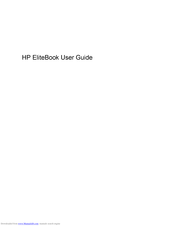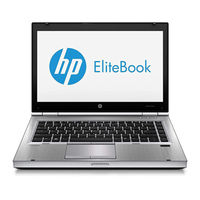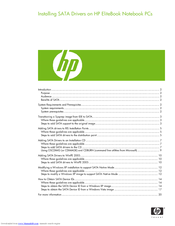HP EliteBook Series Manuals
Manuals and User Guides for HP EliteBook Series. We have 4 HP EliteBook Series manuals available for free PDF download: User Manual, Driver Installation
HP EliteBook Series User Manual (183 pages)
User Guide
Table of Contents
-
1 Features
13 -
-
Using a WLAN30
-
-
4 Multimedia
57-
Audio60
-
Video62
-
-
-
CD-R Discs65
-
CD-RW Discs65
-
DVD±R Discs65
-
DVD±RW Discs65
-
-
Webcam74
-
-
6 Drives
94 -
-
-
9 Memory Modules
120 -
10 Security
129-
Using Passwords130
-
14 Multiboot
163 -
-
Index
177
Advertisement
HP EliteBook Series User Manual (163 pages)
HP EliteBook Notebook User Guide
Table of Contents
-
1 Features
13 -
-
-
-
4 Multimedia
50-
Audio53
-
Video55
-
-
-
CD-R Discs58
-
CD-RW Discs58
-
DVD±R Discs58
-
DVD±RW Discs58
-
-
-
-
6 Drives
86 -
-
-
9 Memory Modules
111 -
10 Security
120-
Using Passwords121
-
14 Multiboot
149 -
Index
157
HP EliteBook Series User Manual (177 pages)
Notebook PC
Table of Contents
-
1 Features
13 -
-
-
Using a WLAN30
-
-
-
-
4 Multimedia
51 -
-
6 Drives
80 -
-
9 Memory Modules
111 -
10 Security
123-
Using Passwords124
-
12 Multiboot
146 -
13 Management
151
Advertisement
HP EliteBook Series Driver Installation (20 pages)
Installing SATA Drivers on HP EliteBook Notebook PCs
Table of Contents
Advertisement



